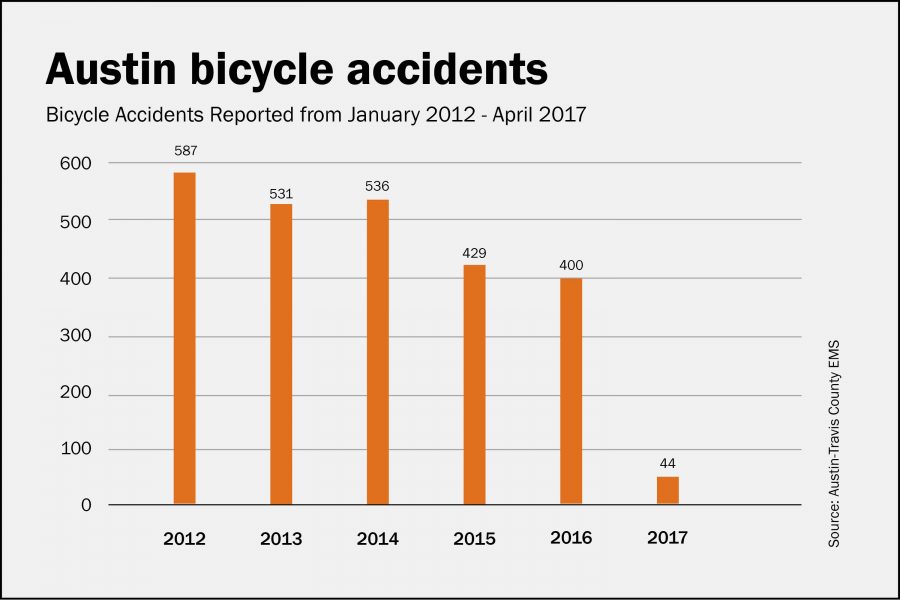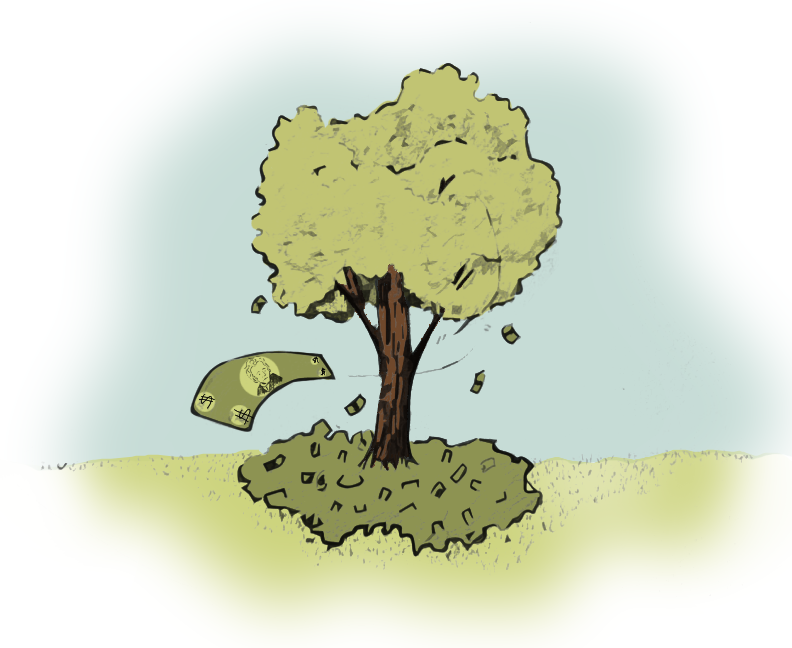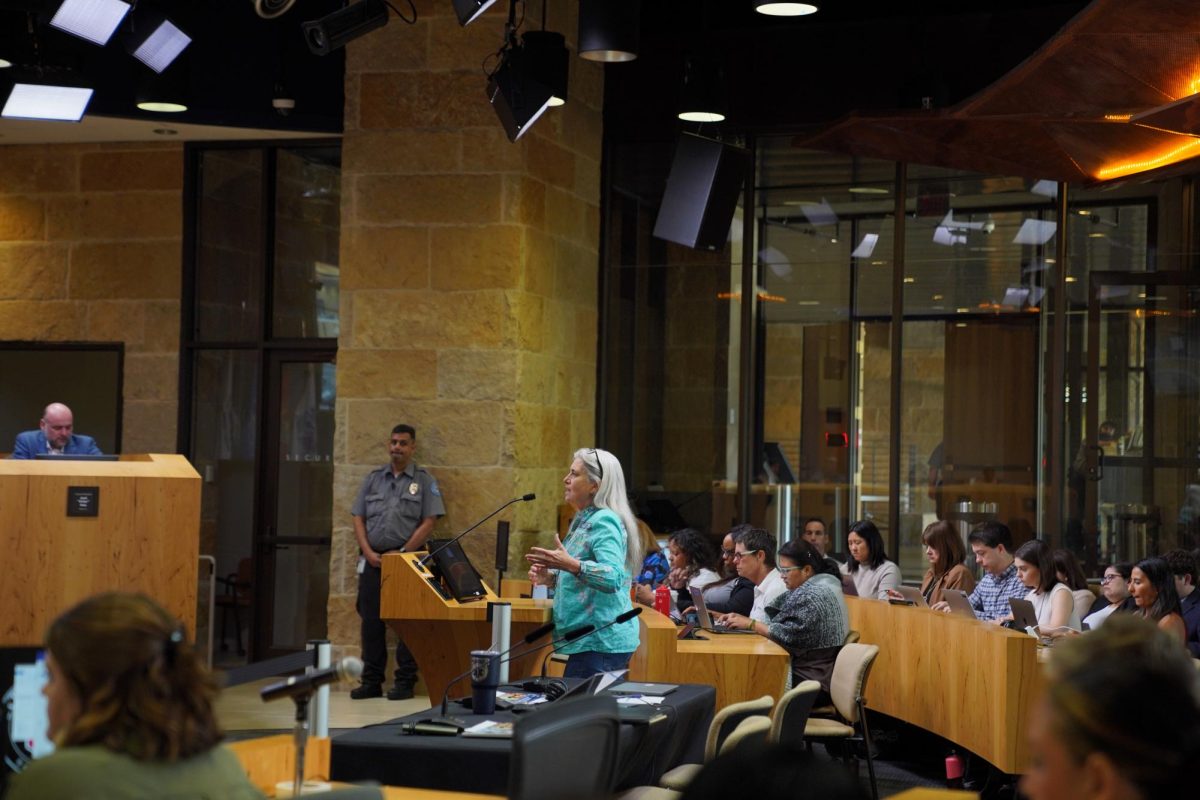Bicycle accidents in Austin have decreased by nearly one-third over the past five years, yet several areas of the city remain just as dangerous to cyclists, according to data from Austin-Travis County Emergency Medical Services.
Since 2012 — one of the deadliest years for cyclists in the city’s history — the Austin Transportation Department has updated its bicycle plan, proposing hundreds of new bike lanes across the city. After the construction of new lanes began in November 2014, cyclist accidents decreased rapidly, dropping total accidents by 20 percent in just one year.
“The city of Austin’s active transportation department has done an excellent job in putting in more bike infrastructure,” said Mercedes Feris, executive director of Bike Austin, a bike safety advocacy organization. “That’s a big contribution to lowering the crashes around Austin.”
Accident rates are expected to be lower this year. Compared to the total 184 bike accidents from January through April 2012, this year has seen a 76 percent decrease in accidents during the same four-month span.
Cyclist accidents and deaths occur most frequently on Lamar Boulevard, Guadalupe Street and Congress Avenue. All cyclist fatalities before 2014 occurred on roads where there were no designated bike lanes, according to Austin-Travis County EMS.
Feris said crashes could be further reduced by adding more protected bike lanes on roads with heavier traffic.
Bradley Houston, an Austin cyclist and lawyer who specializes in bicycle accidents, said the most common type of bicycle-car collision occurs when a car is turning into a bike lane.
“Bicyclists tend to blend into the landscape,” Houston said. “With all of the drivers that are in a hurry, violating safety rules, it’s just so dangerous, and you just have to stay vigilant.”
Houston said cyclists can reduce their risk of getting in an accident in the daytime by attaching a white strobe light to the front of their bikes — an extra safety measure not required by law.
The city has added hundreds of miles of bike lanes in the past eight years, alleviating congestion and leading to less accidents on major roads like Lamar.
In 2016, accidents on Lamar Boulevard decreased 45 percent since 2012, but total accidents on Guadalupe Street increased nearly 25 percent. Accidents on Congress Avenue decreased by more than 50 percent but still occurred in high concentrations where shared lanes or no bike lanes were available.
Jolene Holland Neve, a recent UT graduate and experienced cyclist, said she tries to avoid biking on Guadalupe Street and makes sure to stay visible to other vehicles.
“I always ride like nobody can see me,” Holland Neve said. “I am constantly aware of my surroundings, especially at intersections. I just assume the worst and ride accordingly.”
Feris said Austinites need to recognize everyone’s right to the road in order to improve transportation and make Austin more bike-friendly.
“Infrastructure was built to move people and not cars, and if we can go back to that mindset of ‘we are all people,’ then I think we can start building that understanding (that) we are all humans, and we’re trying to use this respective roadway in whatever capacity that we can,” Feris said.





















